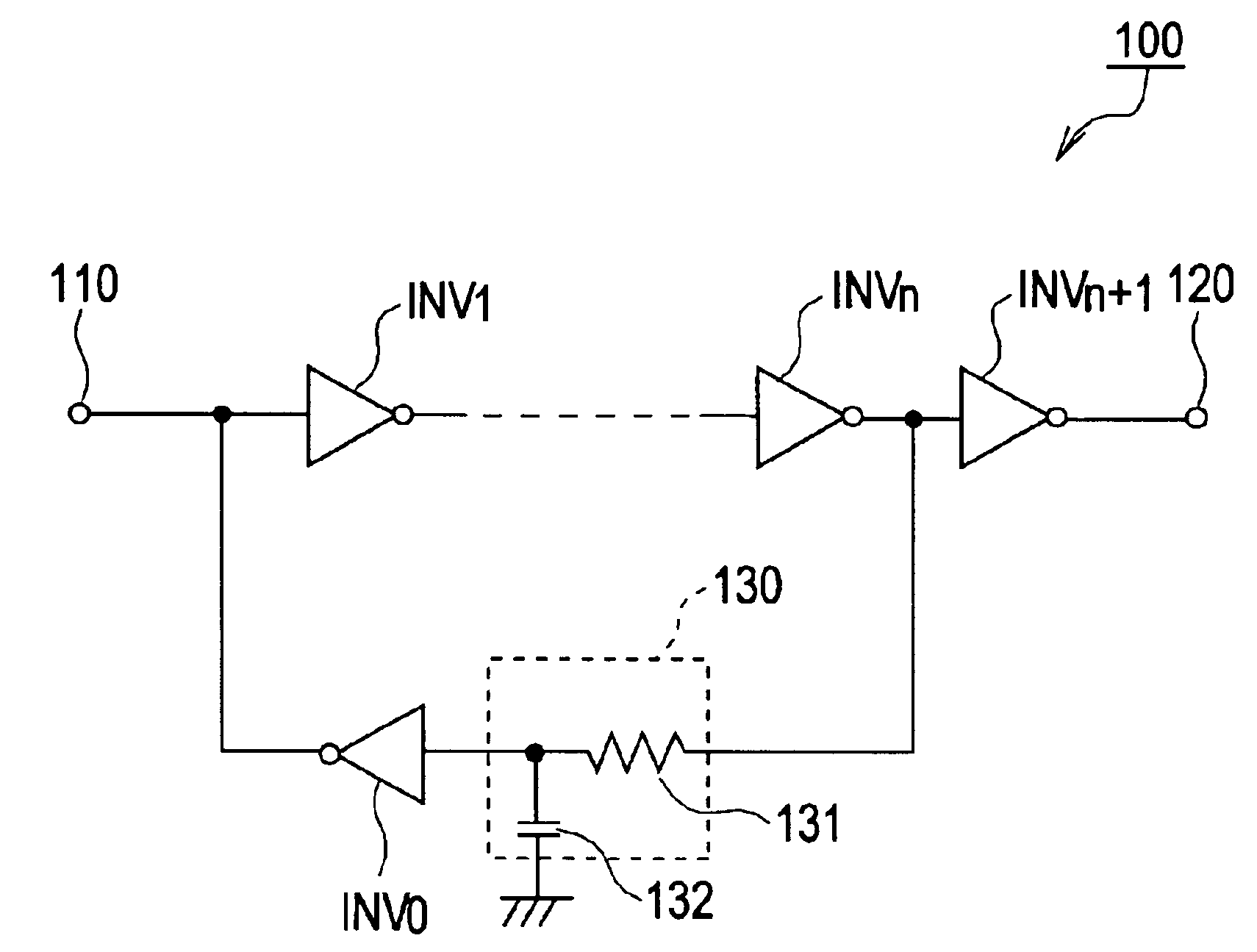Current-voltage conversion circuit
a voltage conversion circuit and current voltage technology, applied in the field of current voltage conversion circuits, can solve the problems of non-uniform and non-uniform duty ratios of high level and low level, distortion of voltage signal that is input into the inverter, etc., and achieve the effect of reducing the distortion of the waveform of the voltage signal that is input into the amplifying inverter and high sensitivity
- Summary
- Abstract
- Description
- Claims
- Application Information
AI Technical Summary
Benefits of technology
Problems solved by technology
Method used
Image
Examples
first embodiment
[0035]A current-voltage conversion circuit constituting the present invention will be described with reference to FIGS. 1 through 3.
[0036]FIG. 1 is a circuit diagram which shows the overall construction of the current-voltage conversion circuit of the present embodiment.
[0037]As is shown in FIG. 1, this current-voltage conversion circuit 100 comprises a signal input terminal 110, amplifying inverters INV1 through INVn+1, an output terminal 120, an integrating circuit 130, and a feedback inverter INV0.
[0038]The input terminal 110 inputs a current signal from the outside.
[0039]The amplifying inverters INV1 through INVn+1 are connected in series. The input of the first-stage amplifying inverter INV1 is connected to the input terminal 110. Furthermore, the output of the final-stage amplifying inverter INVn+1 is connected to the output terminal 120. In the present embodiment, n is an even number.
[0040]The integrating circuit 130 comprises a resistance element 131 and a capacitor 132. One...
PUM
 Login to View More
Login to View More Abstract
Description
Claims
Application Information
 Login to View More
Login to View More - R&D
- Intellectual Property
- Life Sciences
- Materials
- Tech Scout
- Unparalleled Data Quality
- Higher Quality Content
- 60% Fewer Hallucinations
Browse by: Latest US Patents, China's latest patents, Technical Efficacy Thesaurus, Application Domain, Technology Topic, Popular Technical Reports.
© 2025 PatSnap. All rights reserved.Legal|Privacy policy|Modern Slavery Act Transparency Statement|Sitemap|About US| Contact US: help@patsnap.com



